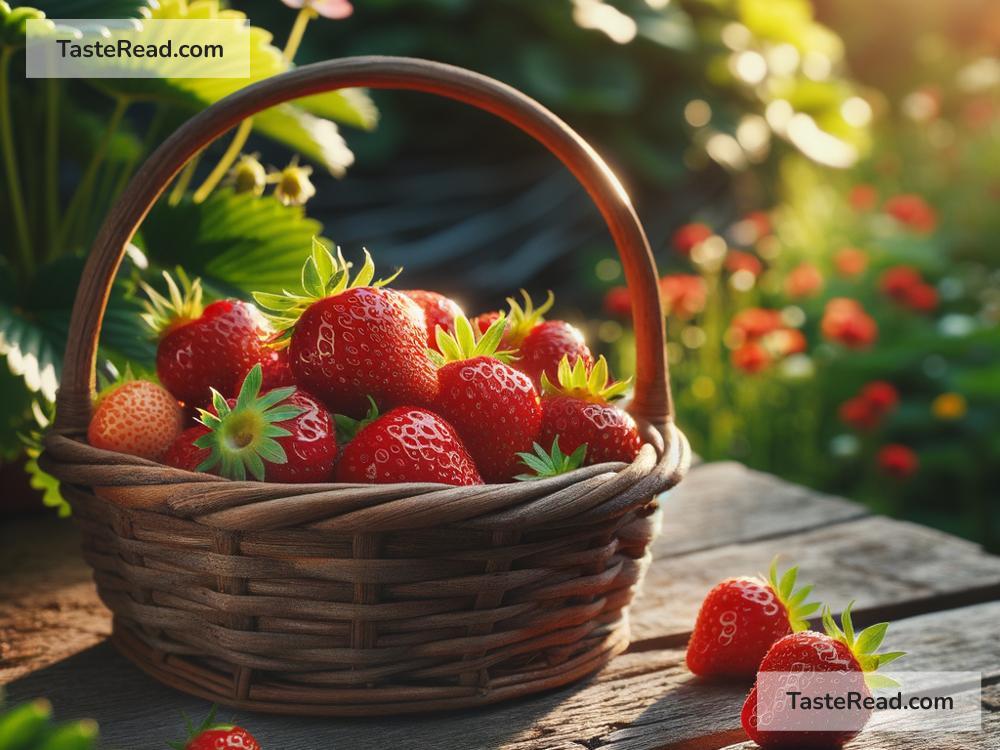The Truth Behind Strawberries and Their Sweetness
When you bite into a strawberry, its bright, juicy sweetness might feel like nature’s gift to your taste buds. But have you ever wondered why strawberries taste sweet—and sometimes not so much? The truth about strawberries and their flavor lies in science, farming, and a little bit of luck.
What Makes Strawberries Sweet?
Strawberries get their sweet taste from sugar. As the fruit matures, it produces natural sugars, mainly glucose and fructose. These sugars are what make strawberries taste sweet and delicious. The riper the strawberry, the more sugar it contains!
But it’s not just sugar that affects the flavor. Strawberries also have a little tanginess from acids like citric acid and malic acid. A perfectly sweet strawberry balances sugar and acid, creating a delicious flavor that is hard to resist.
However, a strawberry’s flavor can vary. Have you ever tasted a strawberry that looks good but disappoints you because it’s sour or bland? This happens because several factors—like the way strawberries grow, the weather, and how they’re picked—impact their sweetness.
The Role of Growing Conditions
Strawberries are delicate fruits, and their sweetness depends heavily on the environment where they grow. Farmers pay attention to factors like sunlight, temperature, soil quality, and water because they influence how sweet the strawberries will be.
1. Sunlight
Sunlight is one of the most important ingredients for sweetness. Strawberries need plenty of sunshine to grow properly. During the day, sunlight helps the plant produce sugars through photosynthesis—a process that turns light into food for the plant. If strawberries grow in cloudy weather or are shaded by other plants, they may not develop enough sugar, making them less sweet.
2. Temperature
Warm weather also plays a big role in strawberry sweetness. Strawberries grow best in temperatures between 60°F to 80°F (15°C to 27°C). If it’s too cold, the plant’s growth slows down, and it may struggle to produce enough sugar. On the other hand, if it’s too hot, the strawberry might ripen too quickly, making it bland.
3. Soil and Water
Healthy soil and the right amount of water are crucial for sweet strawberries. Soil packed with nutrients allows strawberry plants to grow strong and produce flavorful fruit. Too much water, however, can dilute the fruit’s flavor, leaving it watery and bland. On the flip side, too little water can make the strawberries small and dry.
The Human Touch: Harvesting Effects
When strawberries are picked also affects how sweet they are. Unlike some fruits, strawberries don’t ripen after they’ve been picked. This means a strawberry’s sweetness is “locked in” at the time it leaves the plant. If a strawberry is harvested too early, it might not have developed enough sugars, leading to a tart or sour taste. That’s why strawberries that are picked fully ripe often taste better than those harvested early.
In commercial farming, strawberries are often picked before they are fully ripe so they can survive a journey to grocery stores. While this helps the strawberries last longer, it sometimes sacrifices their sweetness. This is why store-bought strawberries are sometimes less flavorful compared to freshly picked ones from a farm.
Wild Strawberries vs. Store-Bought Strawberries
Have you ever tried a wild strawberry? They are much smaller than the ones you buy at the store but are shockingly sweet and flavorful. This is because wild strawberries grow under natural conditions, untouched by large-scale farming methods.
Most store-bought strawberries are specially bred varieties designed to look big and beautiful. Unfortunately, their appearance often comes at the cost of flavor. Some commercial strawberries prioritize traits like size, shelf life, and durability over taste. So while they may look tempting on the outside, they can taste bland compared to wild or locally grown strawberries.
Is Organic Sweeter?
Many people wonder whether organic strawberries taste sweeter than conventional ones. While organic farming focuses on natural growing practices without synthetic chemicals, it doesn’t automatically mean that the strawberries will be sweeter. However, organic farmers often prioritize flavor and quality, so their strawberries might taste better because of the care they put into growing them.
How to Get the Sweetest Strawberries
If you want the sweetest strawberries, here are a few tips:
-
Buy Them in Season: Strawberries are naturally sweetest when they’re in season. In most places, this is late spring to early summer.
-
Choose Local or Pick-Your-Own: Visit a local farm or farmer’s market where strawberries are freshly picked at their peak ripeness.
-
Smell Them: Strawberries with a strong, sweet aroma are likely to taste better.
-
Store Them Properly: Keep strawberries refrigerated and eat them quickly after buying. The longer they sit, the more they lose flavor.
-
Grow Your Own: If you have space, try growing your own strawberries. You can control growing conditions to get the sweetest fruit.
The Sweet Science of Strawberries
So, the sweetness of strawberries isn’t just luck—it’s a mix of sugar levels, growing conditions, and harvesting methods. Whether you’re eating fresh berries from the farm or enjoying a bowl of store-bought strawberries, remember that every bite is the result of nature and nurture working together. Now that you know the truth, you can appreciate strawberries even more for the tiny miracles they are.


